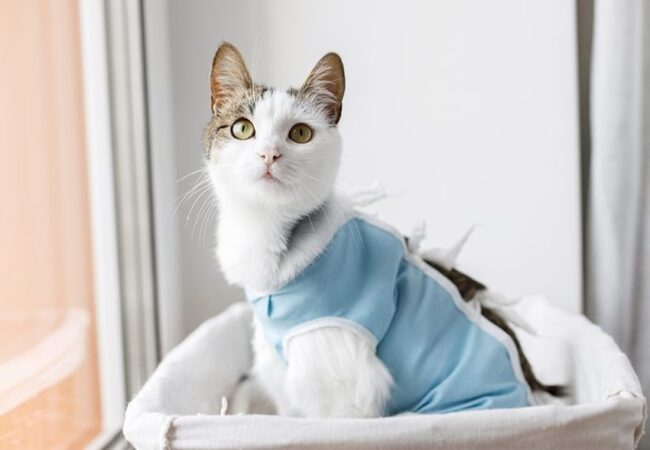Vet‑Approved 2025 Guide: Cat Spay 101 – What to Know Before & After Surgery 🐱✨💉

In this article
Vet‑Approved 2025 Guide: Cat Spay 101 – What to Know Before & After Surgery 🐱✨💉
By Dr. Duncan Houston BVSc
Spaying is one of the most common—and impactful—surgeries in veterinary practice. It prevents unwanted litters and reduces health risks like uterine infections and mammary cancer. But success starts long before the procedure and extends well into the recovery period.
🔹 Why Spay Your Cat?
Spaying (ovariohysterectomy or ovariectomy) removes the uterus and ovaries or only the ovaries. It brings major benefits:
- Prevents uterine infections (pyometra) and reduces breast tumor risk, especially if done before the first heat.
- Eliminates heat behaviors: yowling, urine marking, and roaming.
- Supports population control—spayed females help reduce shelter intake.
📆 When to Spay?
Typically performed at 4–6 months, sometimes as early as 8 weeks in shelters. Spaying before the first heat delivers the best health protection.
⏳ Pre‑Op Preparation
- Fasting: No food after midnight; water OK until drop‑off.
- Check‑in: Bring your cat in calm, in a carrier or on a leash.
- Pre‑op exam: Includes basic blood work and lymphovascular checks.
⚕️ What Happens During Surgery
- Under general anesthesia, cat is monitored via EKG, pulse ox, temperature, and blood pressure.
- Surgeon makes a small midline abdominal incision; ovaries and uterus (or ovaries alone) are removed.
- The incision is closed with layers of sutures—most dissolve over time.
- Some vets give a long‑acting pain injection; others send home oral meds.
🏠 Immediate Post‑Op Care
- Stay with the cat for the first 24 hrs—look for bleeding, breathing issues, lethargy or urinary problems.
- Offer ~½ usual water; small food portions a few hours later—helps prevent nausea.
- They may be groggy or disoriented; behavior should normalize within 24–48 hrs.
🚫 Activity Restriction
To protect the incision and allow healing:
- Keep indoors and confined for 10–14 days—use carriers or small, furniture‑free rooms.
- No jumping, running, climbing, or playing with other pets.
- Keep the litter box nearby to avoid exertion.
🔍 Incision Monitoring
Check the incision twice daily:
- Normal signs: light redness/swelling, minimal bruising, no bad odor.
- Look for lumps like knots or small seromas—these soften over weeks; contact vet if large, hot, bleeding, or draining fluid.
- Report ongoing bleeding, swelling, redness >72 hrs, discharge, bad smell, or wound opening.
🛡️ Preventing Licking & Infection
- Use a properly fitted cone (plastic or soft), donut collar, or surgical suit for 7–10 days.
- Avoid bathing, sprays, or topical products unless prescribed.
💊 Pain Management & Diet
- Administer all vet‑prescribed pain meds—never use over‑the‑counter human meds.
- Keep diet unchanged; avoid table treats; fresh water always available.
- Offer small meals first night, transition back next day.
📞 When to Call the Vet
- No eating/drinking within 24 hrs or no bowel movement by 48 hrs.
- No urination within 12 hrs or difficulty urinating.
- Ongoing vomiting, diarrhea, lethargy, pale gums, and fever.
- Wound issues beyond normal—swelling, discharge, odor, opening.
- Labored breathing, severe shaking/vomiting, or other concerning changes.
🛠️ Comfort & Support Tools
- Ask A Vet: remote check‑ins via photo, chat, and advice—no extra trips..
🏁 Final Thoughts
Spaying is an important, often life-saving procedure—but proper support before and after surgery ensures the best outcomes. Combine calm monitoring, careful movement restriction, incision checks, and compassionate recovery tools like Ask A Vet to help your kitty heal safely and comfortably. And if anything concerns you—just reach out. Your vet, and our app, are here to help. 🐾❤️


